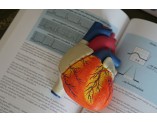Osteoporosis
Osteoporosis becomes more prevalent as we get older as bone is lost gradually throughout adult life. Approximately 54 million Americans have osteoporosis and low bone mass, placing them at increased risk for osteoporosis. Studies suggest that nearly one in two women and up to one in four men age 50 and older will break a bone due to osteoporosis.
What Is Osteoporosis?
Osteoporosis, which means porous bone, is a disease in which the density and quality of bone are diminished. As bones become more porous and fragile, the risk of fracture is significantly increased. The loss of bone occurs progressively and often there are no symptoms until the first fracture happens.
The bone loss with osteoporosis takes place over many years and can become severe. It may be so serious that the normal stress on bones from standing, bumping into something or even hugging someone can result in agonizing fractures and immobility. Once a person has suffered a fracture, they become more at risk for future fractures.
What is Osteopenia?
Osteopenia refers to early signs of bone loss that can become osteoporosis. With osteopenia, bone mineral density is reduced to lower than normal, though it is not yet low enough to be considered osteoporosis. A bone density test can detect osteopenia.
Women over the age of 65, postmenopausal women and men over the age of 50 with risk factors for bone loss should be tested for osteopenia or osteoporosis.
What is the difference between Osteopenia and Osteoporosis?
Osteopenia and osteoporosis are associated conditions. The difference between osteopenia and osteoporosis is that in osteopenia the bone loss is not as severe as in osteoporosis. That means a person with osteopenia is more at risk to fracture a bone than someone with normal bone density but not as easily as someone with osteoporosis.
Signs and Symptoms of Osteopenia and Osteoporosis
How do we know whether or not our bones are healthy? It turns out; there are many external signs and symptoms that may give us a clue to the health of our bones.
Let’s take a look at some indicators that may be signs of early bone loss.
Receding gums - Receding gums are fairly common and can be attributed to many factors, one of which is bone loss. Our teeth are attached to the jaw bone and if the jaw is losing bone, gums can recede.
Decreased grip strength - As we age, one of the ways to keep the risk of fracture at a minimum is through fall prevention. In order to prevent injury due to falls, good balance, muscle strength and grip strength are essential. In a recent study of postmenopausal women, handgrip strength was the most important physical test factor associated with overall bone mineral density.
Weak and brittle fingernails - The appearance and quality of your nails are significant indicators of your bone health. There are two signs of possible bone loss that can be detected in fingernails.
- White Vertical Lines
- Brittle Fingernails
Cramps, muscle aches, and bone pain –Many of us assume aches and pains are a part aging, but these symptoms may indicate that your bones are in need of some assistance. Muscle and bone pain is often unnoticed, but there are well-documented studies that show a lack vitamin D can be an attributing factor.
Height loss - It is normal to lose a little height as we age, but too much height loss can mean that osteoporosis is causing small fractures in your spine and in turn, is making you shorter.
Low overall fitness - Osteoporosis has been connected to a general decline in physical fitness, as measured by aerobic capacity, muscle strength and balance. If your overall fitness declines, it is liable that bone mass will also decline.
When to get help
Osteoporosis is a significant problem among older adults with fractures being the key factor associated with osteoporosis. Osteoporosis and low bone mass are currently estimated to be a major public health threat for almost 44 million U.S. women and men aged 50 and older. In 2002, it was estimated that more than 10 million people already had osteoporosis and will rise to approximately 14 million by 2020.
Of those who sustain significant fractures, most will require long term care placement, such as residential care homes, nursing homes or hire an in home caregiver for rehabilitation or long-term care. Some people may find that they are unable to return home and live independently after rehabilitation because there is an increased requirement of assistance or their spouse or loved one is unable to provide the level of care they need to return home. For in home caregivers and residential care homes, home health agencies are available to provide nursing, physical and occupation therapy for continued rehabilitation in their place of residence. Assisted living facilities may not be a good option, as the person will require more assistance than services that are provided at assisted living communities.









